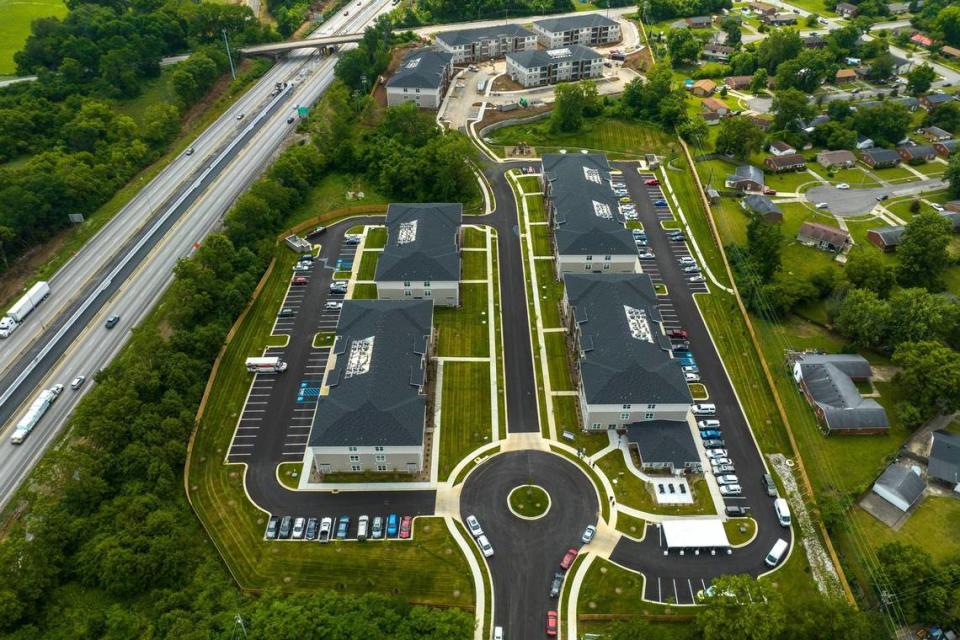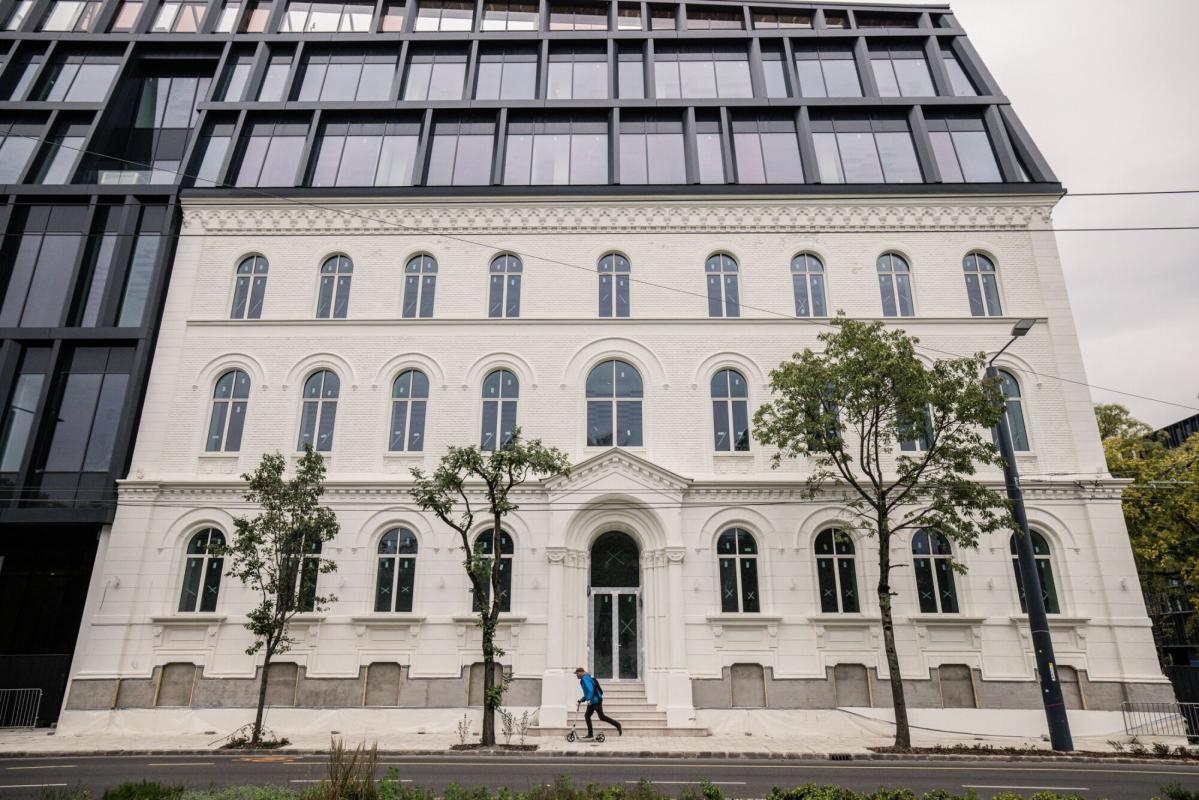Lexington needs more than 22,549 additional housing units to meet housing demand.
The vast majority—17, 005 — need to be affordable units. That’s for those that make less than 80% of area median income of $62,908 or less than $50,326 a year.
Rents in Lexington have skyrocketed in recent years, meaning more people are paying more than 30% of their income on rent or mortgages, the study by EHI Consultants and TPMA showed.
Median rents increased 47% from 2019 to 2024. Average rent is now $1,200 and $1,250, the study showed.
Another consequence: High housing costs are driving people to work in Lexington but live in surrounding communities.
“It’s causing many moderate income residents to look elsewhere for housing,” said Ed Holmes of EHI. “Rents are increasing at an alarming rate.”
The study unveiled Tuesday during the Lexington-Fayette Urban County council’s work session is the first affordable housing study in a decade. A 2014 study by czb showed more than 15,000 households need rental assistance.
The study showed the city can’t rely on its affordable housing fund alone to build more affordable housing units and suggested the city broaden its partnerships and tweak more regulations so more housing, and particularly more affordable housing, is built in the next several decades.

What it means for the city’s affordable housing fund
The study comes as the city has increased the amount of money it puts toward affordable housing from roughly $2 million to a little more than $4 million year, thanks to a 2023 council ordinance that sets aside 1% of city revenues for affordable housing.
The city has invested more than $47.5 million in its affordable housing fund, created in 2014, shortly after the czb study was released. That money has helped pay for 1,750 new units and preserved 1,754 at an average city cost of $13,566 per unit.
Rick McQuady, who has helped oversee the city’s affordable housing efforts since the fund was created in 2014, said the EHI and TPMA study will help guide the city’s affordable housing priorities in future years. The study shows the city needs more supportive housing for people with special needs — such as those with serious mental health problems.
“We need more permanent supportive housing units,” he said.
The study also showed the city needs the most affordable housing units at the bottom of the income ladder, McQuady said.
McQuady said the average household income of city-supported affordable housing units is about $24,000. Eighty-two percent of those tenants — minus those in senior housing and those with serious mental illness — have jobs but do not make enough to pay market rent without help.
Homeowners, renters feeling the pinch
More than half, or 54.3%, of renters spend more than 30% of their income on rent, which is the U.S. Department of Housing and Urban Development definition of cost burdened, according to the study. That data comes from the American Community Survey by the U.S. Census Bureau.
A little less than one third —28% —are extremely cost burdened, spending more than 50% of their income on housing costs.
Moreover, a survey of 1,200 Fayette County residents showed the majority —two-thirds — are struggling to afford to maintain their homes.
“Over half of respondents struggle with affording housing costs,” Holmes said.
“Average wages are going up but not necessarily across the board,” said Adam Klier, a planner with EHI.
That’s not just true of Lexington. That’s true across the country, Klier added.
How will Lexington close the gap?
The city has already made some regulatory and other changes to try to encourage developers to build more low-income and medium-income housing.
It recently passed an overhaul of zoning regulations that allows more types of housing in more zones. It’s also done a lot to leverage state and federal dollars to fund its affordable housing projects, Holmes said.
Encouraging capacity in its nonprofit sector to build more affordable housing will also help, Holmes said. For-profit builders are not likely to fill the gap in affordable housing.
The council voted in 2023 to add 2,800 acres to the city’s growth boundary. The master plan for those 2,800 acres emphasizes multiple types of housing that could result in between 17,000 and 26,000 housing units, preliminary plans show.
A hearing on the expansion area master plan is set for 1:30 p.m. Thursday in council chambers before the Urban County Planning Commission.
The master plan will be finished by Dec. 1. But it will likely take decades for that new land to be developed.
Charlie Lanter, commissioner of housing advocacy and community development, said the city is applying for a U.S. Department of Housing and Urban Development or HUD grant to help make affordable housing a reality in the expansion area.
The grant could help the city install sewer, curbs and other hard infrastructure costs, slashing the price to develop the land, among other ideas. Lanter said the city will know by spring 2025 if it receives the grant.
EMEA Tribune is not involved in this news article, it is taken from our partners and or from the News Agencies. Copyright and Credit go to the News Agencies, email news@emeatribune.com Follow our WhatsApp verified Channel





